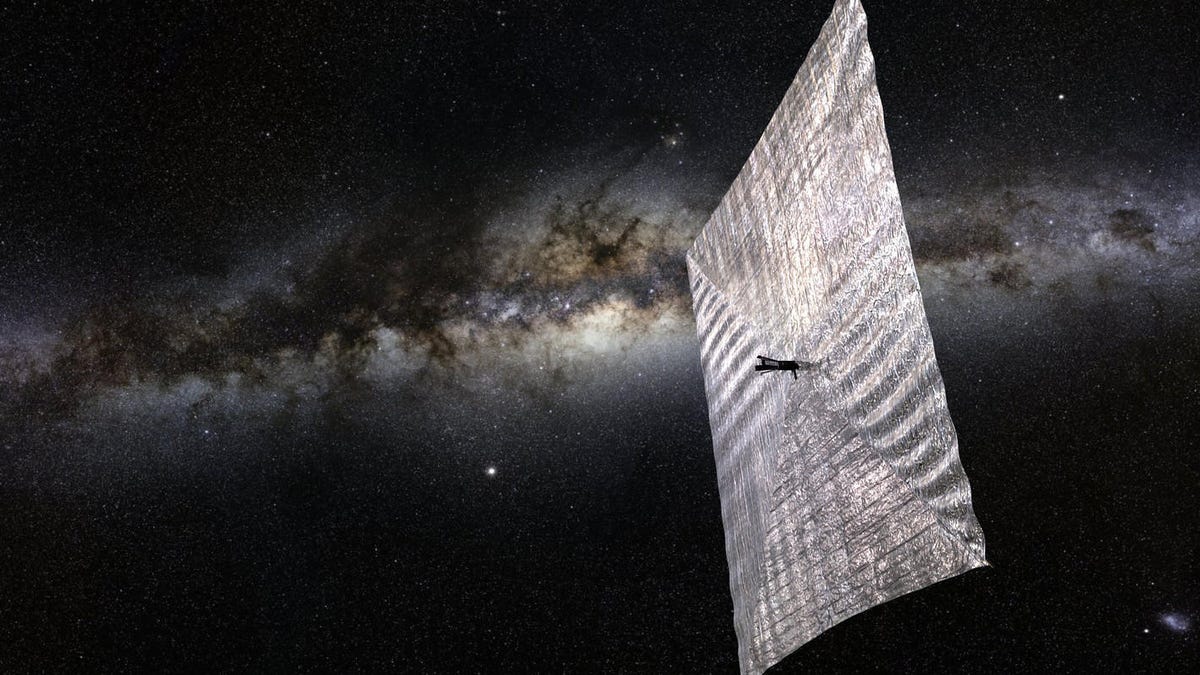NASA wants to develop self-healing spacesuits, Venus landers and spider probes
The space agency's innovative advanced concepts program is funding 18 new projects that could change how we explore the universe.

The ELaNa XI CubeSat LightSail, a citizen-funded technology demo mission launched in 2015. Further development of "lightsail" technology, which uses the energy from the sun to zip through space, is just one of the concepts funded by NASA in the 2019 round of NIAC awards.
Robotic "power beaming" landers on the surface of Venus , micro-probes inspired by spiders, a self-healing spacesuit and mining the lunar poles are all projects NASA has recently greenlit for further development.
Though many of the selected projects from the NASA Innovative Advanced Concepts (NIAC) program seem like they're ripped from the pages of the best science fiction novels (I'm looking at you, Heinlein and Asimov), there is a chance they will be made a reality in the next decade. The NIAC program provides awards up to $500,000 to develop revolutionary technologies that will benefit human spaceflight and cosmic exploration missions.
In the 2019 round, NIAC has selected 12 projects for Phase I awards, valued at around $125,000, and six Phase II awards, valued up to $500,000. Phase I studies are exploratory, nine-month projects that allow researchers to further develop their ideas, while Phase II studies give them a two-year window to advance their technologies even further and outline how they might bring the ideas to life.
Floating power stations would beam energy to the Venus lander in a proposed project from NASA's Jet Propulsion Laboratory.
The Venus lander concept consists of a "dual vehicle architecture" that would see a floating spacecraft collect energy from the Venusian atmosphere and then descend toward Venus's surface to "beam" that energy to a lander. The idea would extend missions to Venus's surface by supplying the lander with a constant source of energy in an environment that is particularly nasty for Earthly visitors.
Another project will see Texas A&M engineers work on a new type of spacesuit they've dubbed the SmartSuit. It would be designed to enhance motion and dexterity but would also contain a number of soft-robotics technologies, sensors and a self-healing skin that doubles as a screen. After the brouhaha over NASA's spacesuit sizing, this concept might be able to kill two space birds with one space stone.
One of the more interesting concepts takes its inspiration from ballooning spiders -- the kind that shoot silk into the air to catch a wind current. The proposed tiny probes would work together in the thousands, weigh about 50 milligrams and float underneath a string loop about 200 meters long. Releasing the spider probes into the atmosphere during future planetary missions would allow researchers to get a better picture of what makes them up and how they came to be.
On top of that, there are 15 other projects all vying to go from idea to reality including lunar mining outposts (particularly important with NASA's commitment to get back to the moon by 2024), neutrino detectors, lightsails and nuclear probes for deep space exploration.
It's a buffet of science fiction concepts and I am dining on the potential. Of course, NIAC is intended to provide the foundation for furthering technologies and there's always the chance that our spider probes and innovative Venus landers don't get to go from clever idea to tangible reality. Some will most certainly remain dreams (or sci-fi fodder)!
NASA will hand out Phase III grants on June 7, which will provide another two years of concept development for projects with the highest potential impact for NASA.
You can peruse the full list of concepts at NASA's Jet Propulsion Laboratory blog.
Originally published 6.21 p.m. April 10

